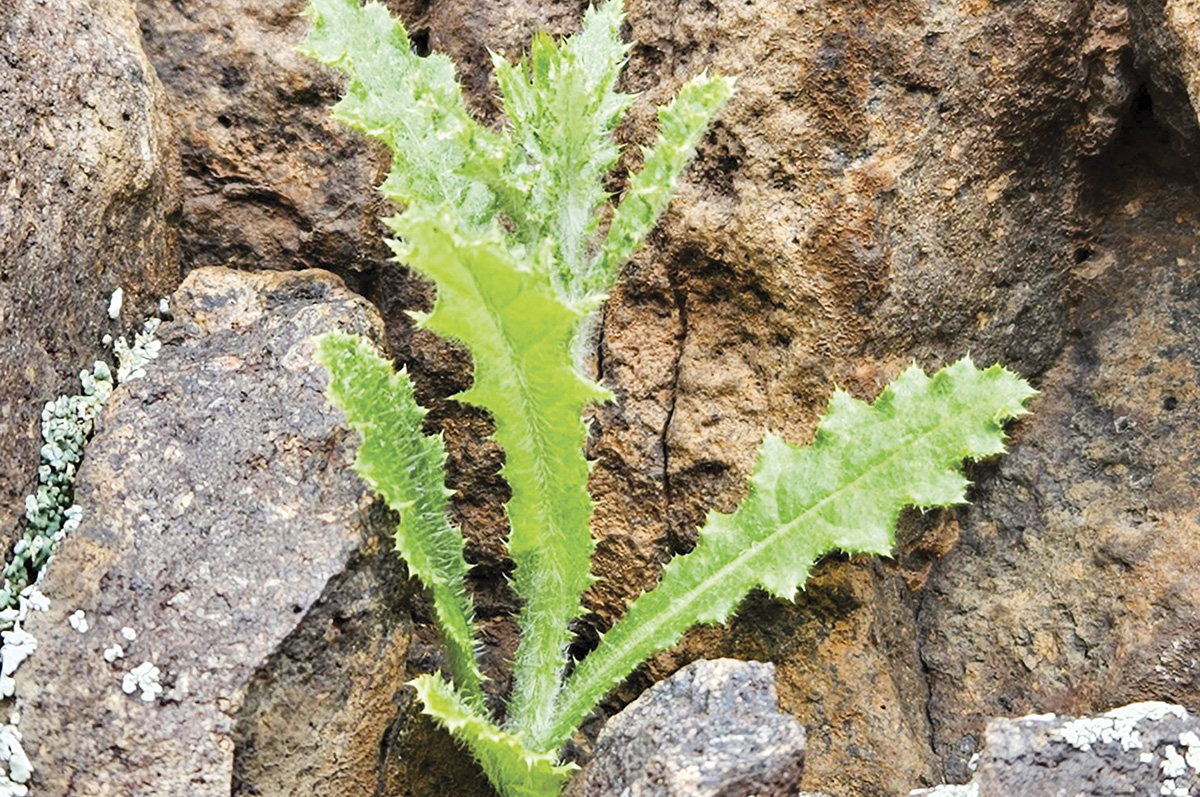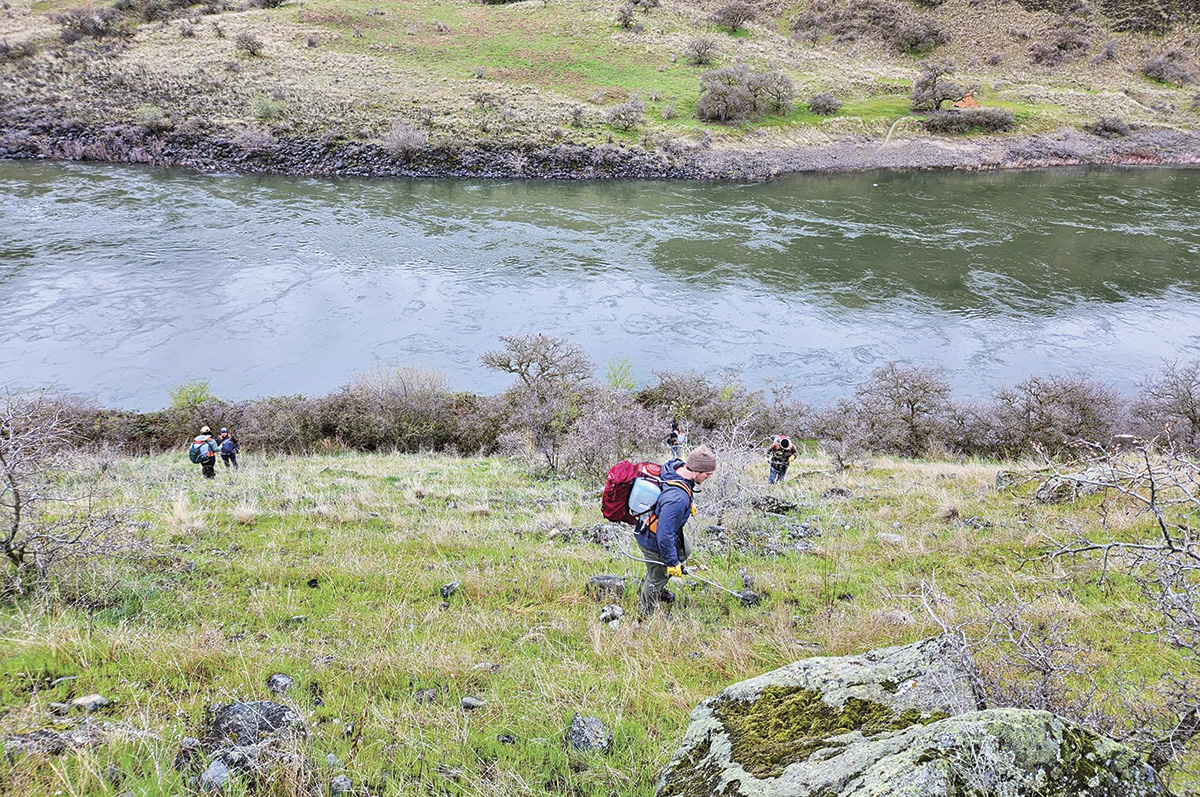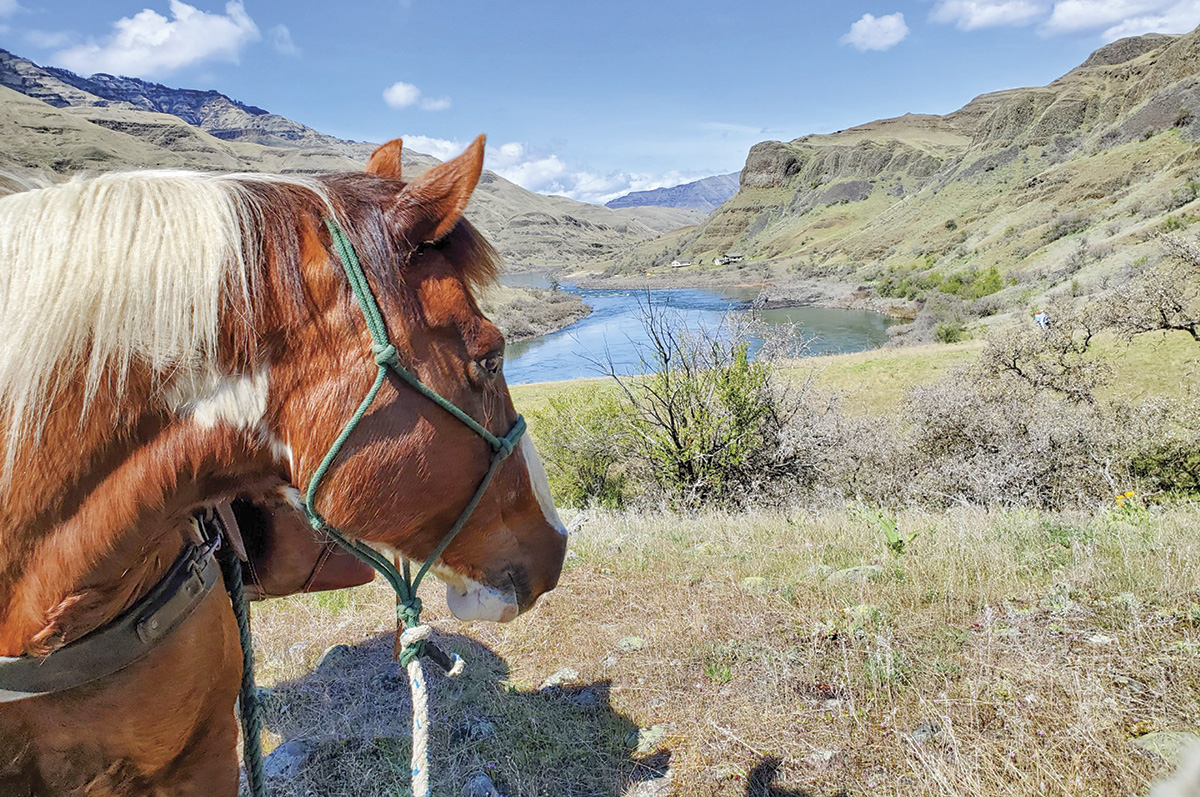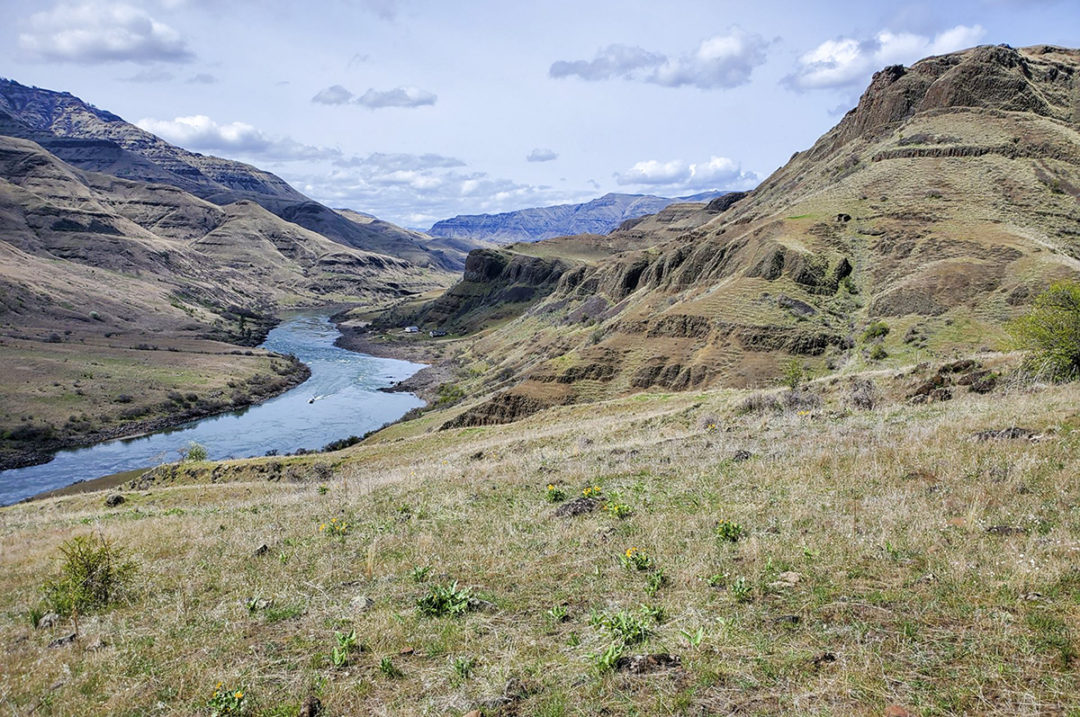People can argue about anything, including the best definition of a weed. However, every land manager I know can agree about their loathing for invasive thistles. Unfortunately, a new species has made its way to North America and found an ideal habitat on the stark hillsides of Hells Canyon.
Turkish thistle (Carduus cinereus) was located in the Imnaha, Oregon, area in 2007. “They thought it was a goofy Italian thistle,” says Jeremey Varley, noxious weeds section manager with the Idaho State Department of Agriculture (ISDA). Land managers released a biocontrol for Italian thistle in 2010, which proved unsuccessful. Genetic testing in 2014 revealed the misidentification. It was the first recorded incident of Turkish thistle in the continental U.S., and it’s unknown how long it lay undetected. Another mystery, says Varley, is “how it ended up in Hells Canyon, of all places.”
Turkish thistle is a spindly plant that can grow up to 4 feet tall. It is closely related to and resembles the Italian thistle. Its main distinguishing characteristics are flower-head arrangement and life cycle timing. Pedicels – small stalks bearing individual flowers – are the key to the former. “With Italian, the flower or bud will grow right off of the stalk, with a grouping of three to five buds together at the top of the plant,” says Idaho County Weed Superintendent Joe Slichter. “Turkish flower heads or bracts are more spread apart, with pedicels.”
As a winter annual, Turkish thistle blooms as early as mid-April, sets seed in May and is fully senesced by mid-June. “You’ve got to get an early attack on it – earlier than what you would think of for thistles,” says Slichter. Italian thistle’s reproductive cycle, between June and August, is more typical. This timing difference means that Turkish thistle requires specialized control efforts and may have already set seed by the time it is detected in a new area – or by the time many agencies have seasonal hires ready to go.

Turkish thistle flourishes in rough country with poor soil. Photo by Jeremey Varley.
A new invader in Idaho
In 2019, Turkish thistle was found at Pittsburgh Landing, a popular jet boat launch area in Idaho County, 23 miles upriver from Imnaha. Turkish thistle was added to Idaho’s noxious weed list via a temporary order in 2020, to expedite treatment efforts. Land managers are following early detection/rapid response (EDRR) guidelines in an attempt to prevent its spread and, if possible, to eradicate it entirely.
An intensive 2022 survey found a larger population on the Idaho side, about halfway between Imnaha and Pittsburgh Landing. Both Idaho locations are in Hells Canyon National Recreation Area (HCNRA), managed by the Wallowa-Whitman National Forest. Discovery of the Wolf Creek population triggered a collaborative treatment effort in April 2023. At 220 acres, says Varley, “it was larger than one entity could take on.”
Besides the county, state and USFS, the Oregon Department of Agriculture (ODA) has also lent manpower, expertise and inventory records to control efforts.
Treatment
Turkish thistle was just going into flower when ISDA and Idaho County weed personnel attacked the Wolf Creek population in April 2023. Armed with backpack sprayers, the crew spent a week gridding the talus slopes from river to snowline. They sprayed thistle patches with Milestone (aminopyralid), which is approved for use on HCNRA and labeled for other common carduus species.
Because of the remoteness, rugged terrain and HCNRA off-road motor travel restrictions, the Turkish thistle warriors accessed the area by jet boat. This meant timing the trip around peak runoff as well as plant maturity. (Some rapids still proved exciting.) Once there, Slichter used horses to pack water up to the sprayers on the hillside.
Although EDRR protocol typically includes removing all plant matter from a site, location and terrain made this unfeasible. Thankfully, says Varley, their spring timing was just right. “In July we checked back,” he says. “Some seeds were produced, but all were non-viable.”

A collaborative team of Idaho County and ISDA personnel spot-sprayed from the river to the snowline. Photo by Jeremey Varley.
Mapping and forecasting
With Oregon’s Turkish thistle acres reaching hundreds of acres, Idaho crews are scrambling to pin down the extent of the infestation. “Turkish thistle infestations start small and can go undetected for years due to the small window in which the plant is most visible and treatable,” says Beckijo Smergut-Wall, North Zone invasive plant coordinator for the Wallowa-Whitman National Forest.
Slichter’s crew has located a population in the adjacent Salmon River drainage and more plants along a highway in another part of the county. “I believe it’s a bigger issue and dispersion than initially identified,” he says.
However, they can now predict likely infestation sites. “Those break country draws are prime areas for it,” says Slichter. “It starts in protected areas and then spreads.” They are also watching old burns closely. Turkish thistle appears to be fire-tolerant and to take advantage of available resources in burned areas, particularly where the fire wasn’t so hot.
Then, too, some answers may be already in the files. “We’re looking back at Italian thistle inventory,” Slichter says. They are wary of potential misidentified plants and perhaps even hybrids.

Once away from the river, crews were thankful for stock to haul sprayer water up the steep slopes. Photo by Joe Slichter.
Looking forward
“We’re trying to push forward and get control,” says Varley. The larger a plant population grows, the faster the infestation will expand. It is more efficient to spend resources early in the invasion than to wait until the weed is widely established. This is especially true if eradication efforts are successful. But those fighting Turkish thistle have their work cut out for them.
“Turkish thistle appears to spread rapidly and be very competitive in native plant communities,” says Smergut-Wall. “Infested grasslands may see a reduction in productivity when thistle densities reach higher levels. Many Turkish thistle populations are within active cattle allotments and along backcountry airstrips where spread potential is high.”
The stakes are high, too. “HCNRA hosts some of the largest native bunchgrass communities in the Intermountain West,” she says. “These bunchgrasses are forage and shelter to many wildlife found throughout the canyon. Many other sensitive plant species and endemic species are at risk to invasive plant introduction, spread and establishment.”
Like Idaho, the Wallowa-Whitman is prioritizing small populations where eradication is still feasible. But eradication will require faithful treatment every year until the seedbank is depleted.
Research on Turkish thistle is limited but, says Varley, “We’re trying to learn as much as we can as we go along.” What they do know is that each thistle-setting seed this year means hundreds or thousands next year. If another carduus species, musk thistle, is an indicator, seeds may be viable for well over a decade.
Whether or not eradication efforts are successful, land managers are prepared to play the long game. “Monitoring and retreatment of sites is required until eradication is achieved,” says Smergut-Wall.






